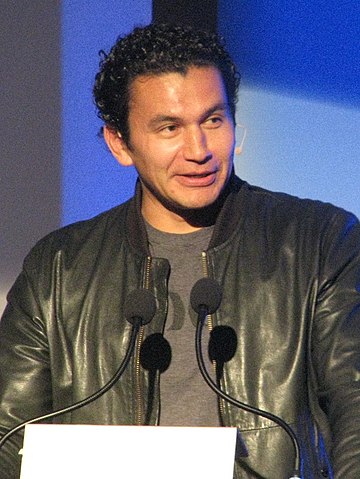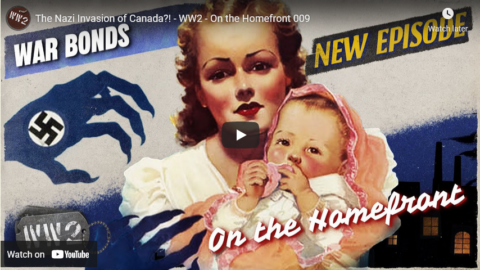World War Two
Published 23 Nov 2023What if I told you that a new conflict will sweep the globe in less than a year? It will open not with gunshots but with silent, shadowy espionage. The man who will kick off the Cold War is a quiet Canadian pilot, millionaire, and spymaster. A trusted aide to Churchill and FDR. I bet you haven’t heard this name before: William Stephenson.
(more…)
November 24, 2023
The Man Who Started the Cold War
October 7, 2023
Wab Kinew, Manitoba’s incoming Premier
Colby Cosh profiles the first Canadian provincial premier of First Nations heritage, Wab Kinew of Manitoba:
My colleague Michael Higgins has an excellent column in Friday’s Post about incoming Manitoba premier Wab Kinew and the remarkable victory speech he gave late Tuesday after his New Democrats won the provincial election. Kinew tackled the usual priorities of the moment, giving love to his own partisans and talking about how his party’s victory means a brighter future for Manitobans. But he also added an unusual personal message with an obvious specific audience, knowing that Canadians ordinarily don’t notice most anything that happens in Manitoba and that he may never again be watched by so many eyeballs.
Kinew is the first-ever First Nations premier of a Canadian province, and that’s a “first” that we dare not dismiss as the usual box-checking diversity exercise. Twenty years ago, as a young and aimless alcoholic, Kinew amassed a brief track record of violence that would probably disqualify a white politician for high office forever. But he pulled himself together while there was still time, became a celebrated broadcaster and found his way into an unlikely political career, becoming leader of the Manitoba NDP in 2017.
So, yeah, Kinew’s diversity bona fides helped make this possible … and the incumbent Manitoba Conservatives did their bit to help, running a re-election campaign characterized by comically daft creepiness. Kinew has made a point of not underplaying his troubled background, although when it was brought up by Conservatives on social media during the campaign, the favourite NDP counter-tactic seems to have been to point out the killer premier next door in Saskatchewan. Yes, us western voters sure have to do a lot of forgiving.
As it turned out, however, all this ugliness led to Kinew’s victory address — which, in turn, became what can only be called a fine and hopeful small-c conservative moment. He told troubled youths still in his old predicament — “the party lifestyle” — to stop “making excuses” and join the wider community.
“To young people out there who want to change your life for the better: you can do it,” the premier-designate said. “But here’s the thing: you have to want it … If you want to join the workforce, get a new career, it has to be you that takes the first step. And if you are dealing with some kind of illness, and want to find healing, it has to be you to decide to move forward.
June 24, 2023
The Most Reliable and Versatile Sub-orbital Rockets Ever Made; the Black Brant Sounding Rockets
Polyus
Published 31 Aug 2018The Black Brant series of sounding rockets was a great success and a proud contribution to the global race for space. While not as glamorous as an orbital rocket, the Black Brants helped scientists from around the globe research and better understand the Aurora and the Earth’s ionosphere.
(more…)
November 19, 2022
QotD: Canada from the American Revolution to the Riel Rebellion
A significant number of Americans who were loyal to Britain and despised the American Revolution moved to Canada during and in the decades after the Revolutionary War. And as the number of English Canadians steadily increased along the Great Lakes and west of the Ottawa River, [Sir Guy] Carleton created what became the province of Ontario, Upper Canada, in 1791. The first lieutenant governor, John Graves Simcoe, devised and implemented an ambitious program of enticing Americans to Canada by effectively giving them rich farmland. The population of English Canada rose swiftly toward parity with the French. In 1792, Simcoe took it upon himself to abolish slavery in Upper Canada, 42 years before this was done in the British Empire, and 71 years before the United States. It was an admirable and pioneering endeavour in the principal area of civil rights controversy in North America in the coming century.
Unfortunately, as the Revolutionary and Napoleonic wars unfolded, the British could not resist the temptation to employ their mastery of the high seas to impose blockades and harass the shipping of neutral powers. The young United States did not have the military force to deter such treatment, and in 1812 those countries went to war. Canada was the blameless focal point of most of the fighting. Canada with the continuing solidarity of the French-Canadians, was able to mount a very solid defense. The many thousands of recently arrived Americans did not support the United States and the generous policy of enticing settlement from the United States was completely vindicated. There were pressures to expel them, monitor them, disqualify them from holding local offices and positions. But it was soon agreed that they could become citizens after eight years of residency. This affected about 40 percent of English-Canadians and this must count as another very successful chapter in Canada’s early record of respect for civil and human rights.
As reasonably successful wars do, considerable national sentiment was created and encouraged by the successful joint struggle to avoid American occupation. Out of these experiences came increased ambitions for democratic self-rule in domestic matters as the British and Americans enjoyed, instead of autocratic rule by British governors. Canada’s position was complicated by the fact that it could not agitate for home rule too energetically or the British would lose patience and sell Canada to the United States for cash or other territory or for a comprehensive alliance. Outright rebellion was not an option for Canada as it had been for the Americans, as the United States would seize Canada if it were not under British protection.
The Canadian solution for agitating but not completely exasperating Great Britain was the Gilbert and Sullivan rebellions of 1837 led by William Lyon Mackenzie in Ontario and Louis-Joseph Papineau in Québec. The Ontario uprising was just a rowdy group of malcontents who became disorderly and were easily chased off, and the French-Canadian group were essentially pamphleteers, though there were some exchanges of fire and small rebel and military units marched to and fro in poor winter weather. A total of about 300 people died, there were 14 executions and 92 people were transported as prisoners to Australia. The rebel leaders fled but were eventually pardoned and returned.
There was enough commotion to get Britain’s attention, but the loyalty of most of the population gratified the British, and they determined to put things right. London sent the well-known reformer Lord Durham to Canada in 1840 to make recommendations. After a year of research by a couple of biased examiners, Durham came to the insane conclusion that the source of Canadian discontent was that the French-Canadians wanted to be relieved of the intolerable burden of being French. Durham proposed uniting Upper and Lower Canada and assumed that the slight resulting English majority would assimilate the French in about 10 years. Of course, this was precisely what the French feared, and the English-Canadians had no desire for it either. But after several years of rearguard action by British governors, the movement for autonomous government succeeded, after the 25-year-old Queen Victoria sent Lord Elgin to Canada as governor to give the Canadians what they wanted. Elgin and Robert Baldwin and Louis-Hippolyte LaFontaine achieved this and secularized a great deal of territory owned by the principal churches so that they could be more easily settled and made the principal universities officially nondenominational. These were again great and non-violent steps in the civil rights of Canadians who now numbered over two million people.
All of North America was now walking on eggshells over the immense problem of American slavery. Slavery was abolished throughout the British Empire in 1834. In practice, there had not ever been more than a couple of hundred slaves in Canada, apart from the natives enslaving each other. Slaves had been imported to the southern states because of their efficiency at harvesting tropical crops such as cotton, so Canada was effectively spared that horrible institution, because of its climate more than its virtue. Canada consistently had a fine record in accepting about 40,000 fugitive slaves that reached the Canadian border in the thirty years before the U.S. Civil War. The leading American anti-slavery advocates Harriet Tubman and John Brown, and Josiah Henson, the model for the chief character in Harriet Beecher Stowe’s novel Uncle Tom’s Cabin, which sold an unheard-of two million copies in the 1850s, all lived in Canada for years. There were at least 11 black Canadian doctors who were fugitive slaves or sons of fugitive slaves who served in the Union Army in the Civil War, and the white Canadian anti-slavery activist, Dr. Alexander Ross, at the request of President Lincoln, assisted in breaking up a Confederate spy ring in Montréal. Escaped slave Joseph Taper, of St. Catharine’s, wrote this letter back to his former and still putative owner in 1839: “I now take this opportunity to inform you that I’m in a land of liberty, in good health … In the Queen’s dominions, man is as God intended he should be; all are born free and equal, not like the southern laws, which put man on a level with brutes. All the coloured population is supplied with schools. My boy Edward, who will be six years next January, is now reading and I intend keeping him at school until he becomes a good scholar. My wife and self are sitting by a good comfortable fire, happy, knowing that there are none to molest us or make us afraid. God save Queen Victoria.”
As many as 40,000 Canadian volunteers served in the Union Army in the Civil War and Canada was thanked on several occasions by President Lincoln for infiltrating Confederate exile organizations. This was an issue in which all Canadians were united and is a legitimate matter of national pride.
The next major civil rights challenge that Canada had to face was that of the Métis — the mixed white and indigenous people on the Great Plains of Canada. The territory of the natives had been steadily reduced by white settlement and the nutritious content of their diet had been reduced by the heavy depletion of the herds of plains Buffalo. There were also many other grievances and undoubtedly a number of violations of the Indian treaties and of the Indian Act and a flamboyant Metis lawyer, Louis Riel, led an uprising on the western plains in 1878. This was eventually suppressed with little violence, as Prime Minister John A. Macdonald dispatched an adequate military force under Field Marshal Garnet Wolseley, Gilbert and Sullivan’s “very model of the modern major general”. Riel fled to the U.S. and the Canadian government made a number of useful concessions to the aggrieved natives. But in 1885, Riel returned and led a rebellion in northwest Saskatchewan. At the same time, the Canadian Pacific Railway ran out of money and was about to flounder into bankruptcy. Macdonald brilliantly sent Canadian forces West on the railway and they surprised and defeated the insurgents and captured Riel. By emphasizing the railway’s role in saving the country (as Riel was making both annexationist and secessionist noises), Macdonald won passage of a bill to finance completion of the railway. Macdonald also gave the natives the right to vote and rewarded his allies among the native leaders. However, he created a lasting grievance by allowing the execution of Riel. Although 15 people died in the uprising, he should have commuted the sentence for insanity — Louis Riel was delusional.
Conrad Black, “Canada’s excellent history of civil and human rights”, New English Review, 2022-08-18.
August 26, 2022
Bristol/Magellan CRV7 Ground Attack Rockets; Simply The Best
Polyus
Published 19 Aug 2022Sometimes a weapon is produced that no one can ignore. Something so much better than anything else on the market that it becomes the de facto standard. Winnipeg, Manitoba’s Bristol Aerospace created such a weapon in the early 1970s. It combined high speed and long range with a powerful knockout punch. It was the CRV7 rocket and it would eventually become ubiquitous among western aligned armed forces.
(more…)
August 12, 2022
The 1983 “Gimli Glider” Incident
TheHistoryGuy
Published 27 Apr 2022Captain Sully’s US Airways Flight 1549 lost its engines almost immediately after takeoff, after reaching an altitude of only 2,800 feet. In 1983, a very different flight lost power at a staggering 41,000 feet, and the pilots had no choice but to try to land the plane without engines.
(more…)
May 7, 2021
The Nazi Invasion of Canada?! – WW2 – On the Homefront 009
World War Two
Published 6 May 2021What would happen if Nazi Germany invaded Canada? You don’t need to imagine. In 1942, the government of Mackenzie King launched a propaganda effort that simulates Canada falling under Hitler’s yoke. Why? For the war economy of course!
Join us on Patreon: https://www.patreon.com/TimeGhostHistory
Or join The TimeGhost Army directly at: https://timeghost.tvFollow WW2 day by day on Instagram @ww2_day_by_day – https://www.instagram.com/ww2_day_by_day
Between 2 Wars: https://www.youtube.com/playlist?list…
Source list: http://bit.ly/WW2sourcesHosted by: Anna Deinhard
Written by: Fiona Rachel Fischer and Spartacus Olsson
Director: Astrid Deinhard
Producers: Astrid Deinhard and Spartacus Olsson
Executive Producers: Astrid Deinhard, Indy Neidell, Spartacus Olsson, Bodo Rittenauer
Creative Producer: Maria Kyhle
Post-Production Director: Wieke Kapteijns
Research by: Fiona Rachel Fischer
Edited by: Miki Cackowski
Sound design: Marek Kamiński
Map animations: Miki Cackowski and Eastory (https://www.youtube.com/c/eastory)Colorizations by:
Adrien Fillon – https://www.instagram.com/adrien.colo…
Daniel WeissSources:
IWM Art.IWM PST 18495, CH 27, CH 3231, CH 6831, HU 88386, HU 104482
nationaal archief
Photo Album of F.V. Light (1923-2000)Soundtracks from the Epidemic Sound:
Howard Harper-Barnes – “London”
Johannes Bornlof – “The Inspector 4”
Howard Harper-Barnes – “Prescient”
Max Anson – “Ancient Saga”
Howard Harper-Barnes – “Sailing for Gold”
Philip Ayers – “Please Hear Me Out”
Jo Wandrini – “Puzzle Of Complexity”
Reynard Seidel – “Deflection”
Rannar Sillard – “March Of The Brave 4”
Phoenix Tail – “At the Front”Archive by Screenocean/Reuters https://www.screenocean.com.
A TimeGhost chronological documentary produced by OnLion Entertainment GmbH.
From the comments:
World War Two
1 day ago
As you can see in the video, the efforts to raise money to pay for the war were extremely high. But when we read about the stuff that was going on in Winnipeg on “If-Day”, we were really surprised — talk about “playing” war! Of course, this top-notch high-effort propaganda had quite the impact on the citizens of Winnipeg, because — let´s be honest — who wouldn´t be frightened by any kind of Nazi invasion? And they did not spare any effort to get the details right, too. What is your impression of If-Day? Have you heard of it before? Please let us know in the comments!Cheers, Fiona
P.S. If you want to watch the short film starring Donald Duck which Anna mentions in the video, click right here: https://www.youtube.com/watch?v=XNMrMFuk-bo&ab_channel=8thManDVD.com%E2%84%A2CartoonChannel
September 3, 2020
Fallen Flag — The Great Northern Railway
 This month’s Classic Trains featured fallen flag is an American railway that definitely deserved to call itself “great”, James J. Hill’s Great Northern Railway. Hill was noteworthy as the only “Robber Baron” of that era who was scrupulous in avoiding government entanglements (including grants, loans, subsidies, and other forms of money-with-political-strings-attached), building his entire railway system using private funds and rational profit-oriented economic decision-making (the other transcontinental lines often over-built to claim higher subsidies or added money-losing branch lines to please powerful politicians). The result was that when economic hard times hit the railway business, his was the only transcontinental that never needed to declare bankruptcy.
This month’s Classic Trains featured fallen flag is an American railway that definitely deserved to call itself “great”, James J. Hill’s Great Northern Railway. Hill was noteworthy as the only “Robber Baron” of that era who was scrupulous in avoiding government entanglements (including grants, loans, subsidies, and other forms of money-with-political-strings-attached), building his entire railway system using private funds and rational profit-oriented economic decision-making (the other transcontinental lines often over-built to claim higher subsidies or added money-losing branch lines to please powerful politicians). The result was that when economic hard times hit the railway business, his was the only transcontinental that never needed to declare bankruptcy.
In an earlier post, Dane Stuhlsatz summarized the GN’s engineering:
Hill’s line […] was methodically surveyed and built, on the shortest routes possible, with the least gradient possible, and using the best steel and other materials on the market at the time. Rather than political largess, Hill made his decisions based on profit and loss. But, for all the efficiency that Hill built into his line — he was able to transport across the country faster, cheaper, and with less maintenance costs than could the UP and CP — arguably the most important aspect for the viability of his business was the freedom to conduct business untethered by the strings that accompanied government subsidies.
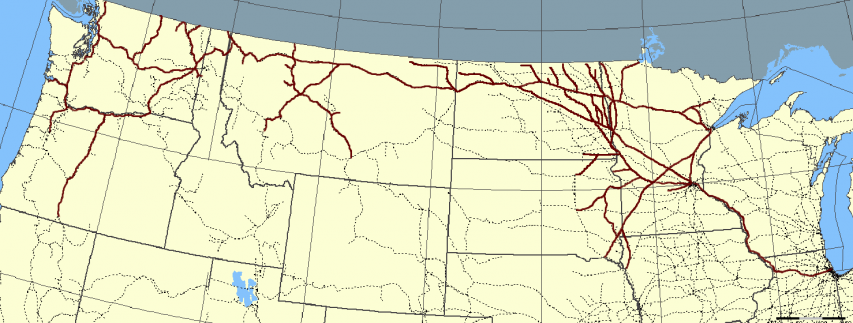
Route map of the Great Northern Railway, circa 1920. Red lines are Great Northern trackage; dotted lines are other railroads.
Map by Elkman via Wikimedia Commons.
George Drury outlines the origins of the railway:
In 1857, the Minnesota & Pacific Railroad was chartered to build a line from Stillwater, Minnesota, on the St. Croix River, through St. Paul and St. Cloud to St. Vincent, in the northwest corner of the state. The company defaulted after completing a roadbed between St. Paul and St. Cloud, Minnesota, and its charter was taken over by the St. Paul & Pacific Railroad, which ran its first train between St. Paul and St. Anthony (now Minneapolis) in 1862.
For financial reasons the railroads were reorganized as the First Division of the St. Paul & Pacific. Both StP&P companies were soon in receivership, and Northern Pacific, with which the StP&P was allied, went bankrupt in the Panic of 1873.
In 1878 James J. Hill and an associate, George Stephen, acquired the two St. Paul & Pacific companies and reorganized them as the St. Paul, Minneapolis & Manitoba Railway (“the Manitoba”). By 1885 the company had 1,470 miles of railroad and extended west to Devils Lake, North Dakota. In 1886 Hill organized the Montana Central Railway to build from Great Falls, Montana, through Helena to Butte, and in 1888 the line was opened, creating in conjunction with the StPM&M a railroad from St. Paul to Butte.
In 1881 Hill took over the 1856 charter of the Minneapolis & St. Cloud Railroad. He first used its franchises to build the Eastern Railway of Minnesota from Hinckley, Minnesota, to Superior, Wisconsin, and Duluth. Its charter was liberal enough that he chose it as the vehicle for his line to the Pacific. He renamed the road the Great Northern Railway; it then leased the Manitoba and assumed its operation.
[…]
Even before completion of the route from St. Paul, the Great Northern opened a line along the shore of Puget Sound between Seattle and Vancouver, British Columbia, in 1891. In the years that followed, Hill pushed a number of lines north across the international boundary into the mining area of southern British Columbia in a running battle with Canadian Pacific. In 1912 GN traded its line along the Fraser River east of Vancouver to Canadian Northern for trackage rights into Winnipeg.
Great Northern gradually withdrew from British Columbia after Hill’s death. In 1909 the Manitoba Great Northern Railway purchased most of the property of the Midland Railway of Manitoba (lines from the U.S. border to Portage la Prairie and to Morden), leaving the Midland, which was jointly controlled by GN and NP, with terminal properties in Winnipeg. The Manitoba Great Northern disposed of its rail lines in 1927. They were later abandoned.
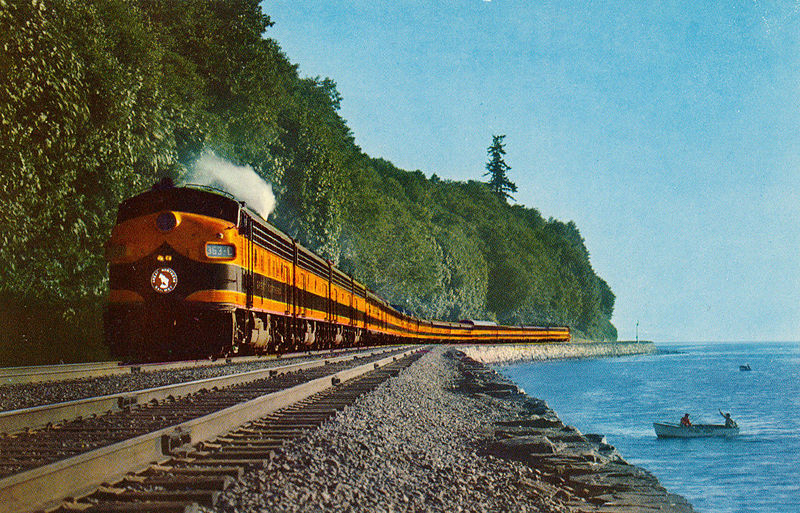
Postcard photo of the Great Northern Railway’s “Empire Builder” streamliner between Everett and Seattle, Washington, circa 1963.
Great Northern Railway postcard via Wikimedia Commons.
The Great Northern and Northern Pacific lines agreed to a merger in 1901 (both lines were controlled by Hill) but the plan was vetoed by the Interstate Commerce Commission. A second attempt in the 1920s after Hill’s death was again turned down by the regulator unless the combined company divested ownership of the Chicago, Burlington & Quincy which was both railways’ connection from Minneapolis to Chicago. It was only on the final attempt in 1970 that the deal gained the government’s grudging approval and the Great Northern, Northern Pacific, and CB&Q merged to form the Burlington Northern.
August 26, 2018
The Wolseley Expedition and the making of Canada
The History Guy: History Deserves to Be Remembered
Published on 2 May 2018In the early days of the Canadian confederation, one of the greatest officers of the British Victorian Army takes 1000 soldiers on an impossible march through the wilderness that helps to define modern Canada.
All events are described for educational purposes and are presented in historical context.
Patreon: https://www.patreon.com/TheHistoryGuy
The History Guy: History Deserves to be Remembered is the place to find short snippets of forgotten history from five to fifteen minutes long. If you like history too, this is the channel for you.
June 11, 2014
Winnipeg Blue Bombers to honour Bud Grant with a statue
Gordon Sinclair, Jr. reports in the Winnipeg Free Press:
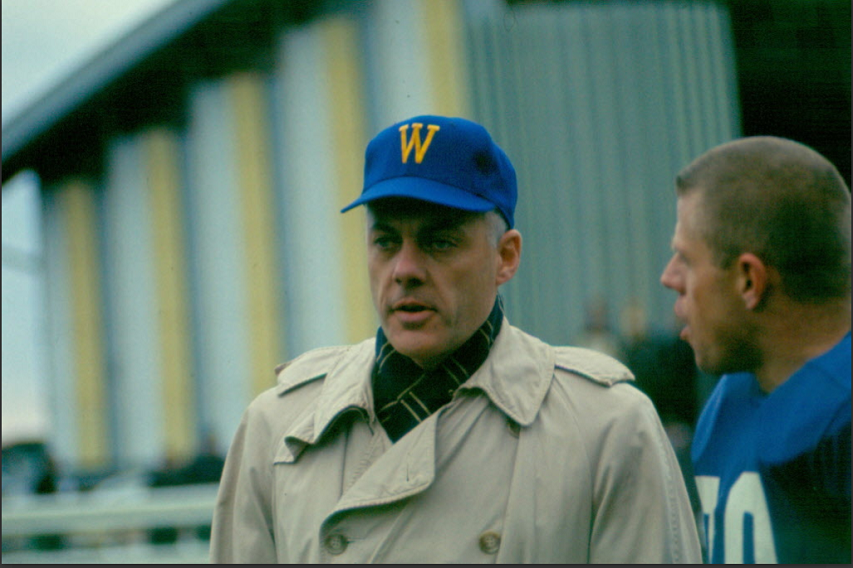
I had lost hope in the Winnipeg Blue Bombers.
Not the team.
Not the hope of the Bombers winning a Grey Cup in my lifetime or even having a winning season.
No, I’d lost hope that my campaign to have the organization erect a statute in honour of Bud Grant and all that would represent and mean to the organization and the community, had not only failed, it had been ignored.
Board chairman Brock Bulbuck had suggested when we spoke last year that it was an appealing idea. But it was a year ago this month that I wrote the first of three columns explaining why a statute to the iconic Bomber coach should be placed outside Investors Group Field.
I went on to say I had heard there had already been talk of a statue to Grant among those tasked with honouring the team’s tradition, but the statue concept needed a nudge.
“Consider this a big nudge,” I wrote. “Furthermore, consider this: The Bombers should start a fund to commission a statue to Grant…”
A year passed.
The team, I reasoned, had more pressing matters, and gradually I lost hope the statue would happen in Grant’s lifetime, if ever.
Then last Friday an email arrived, it was a courtesy message delivered by Kim Babij-Gesell, the team’s co-ordinator of communications.
H/T to The Viking Age, who helpfully rounded up a few career highlights for Grant:
If you’re not familiar with Mr. Bud Grant, here are some astounding facts about the man:
- 1st round draft pick in 1950 (#14 overall)
- Played for the Philadelphia Eagles from 1951-1952
- Played for the Winnipeg Blue Bombers from 1953-1956
- Coached the Winnipeg Blue Bombers from 1957-1966
- Coached the Minnesota Vikings from 1967-1983
- Returned to coach the Vikings for the 1985 season
- 1965 CFL Coach of the Year
- 1969 NFL Coach of the Year
- Holds the CFL record for most interceptions in a playoff game (5)
- Member of the Canadian Football Hall of Fame
- Member of the Pro Football Hall of Fame
- Coached the 1969 NFL Champion Vikings
- 3rd most successful professional football coach in history (290 wins)
- Played in the NBA for the Minneapolis Lakers (4th round draft pick)
- Only person in history to play in both the NFL and the NBA
After looking over that huge list of accomplishments, it isn’t hard to believe that a statue would be put up in Bud Grant’s honor. The statue will be erected at Investors Group Field in Winnipeg, Manitoba this fall according to Kim Babij-Gesell, the coordinator of communications for the Winnipeg Blue Bombers
November 16, 2012
Windsor’s new city slogan, courtesy of Stephen Colbert
American comedian Stephen Colbert just can’t seem to get off the back of Windsor, Ontario, and now he has dragged Winnipeg and the CBC into his attack routine.
If you could reply to Colbert’s comment, what would you say? Leave a comment below or on our Facebook Page (facebook.com/cbcmanitoba), and our Trending Now team will select the best comments to send back to Colbert!
November 5, 2012
The three VC winners from one block in Winnipeg
The Canadian War Museum now boasts all three Victoria Crosses won by Winnipeg soldiers during World War 1 … who all lived on the same block of Pine Street (now Valour Road):
When Acting Cpl. Lionel B. (“Leo”) Clarke was faced with the choice to surrender to the enemy, or to fight his way out of the trenches against all odds, he chose the latter. And, for that act of valour on Sept. 9, 1916, in which he killed or captured 18 German soldiers and two officers, Clarke — then 24 years old — received the highest honour awarded to Canadian soldiers: The Victoria Cross.
Less than two months later he was dead, dying in the arms of his brother Charles at the Battle of the Somme.
On Monday, Clarke, a native of Waterdown, Ont., who volunteered to go to war in 1915 as a bomber, was again honoured in a ceremony at the Canadian War Museum in Ottawa.
It marks an extraordinary occurrence in Canadian military history: in different years and different battles during the First World War, three men from the same block of Winnipeg’s west-end Pine Street earned the Commonwealth’s highest military honour. And with the acquisition of Clarke’s medal, the War Museum now owns all three Victoria Crosses awarded to the men of Pine Street, which in 1925 was renamed Valour Road.
Each of the three men — and the 96 other Canadians who bear the honour — won it for “the most conspicuous bravery, a daring or pre-eminent act of valour or self-sacrifice or extreme devotion to duty, in the presence of the enemy.”
Update: And, if I watched a bit more TV, I’d have known what David Stamper just pointed out to me on Facebook … that they were featured in a Heritage Moment TV spot:
June 14, 2012
Winnipeg is not a hellhole
I’ve spent a few weeks in Winnipeg, and while it was a pleasant place to stay in June, others perhaps didn’t have as much fun:
The local affiliate is interrupting the 4th quarter of the #NBAFinals to show city council election results!!!#TrappedInAHellHole
— Rob Lowe (@RobLowe) June 13, 2012
And Scott Feschuk rounded up the reactions very well:
https://twitter.com/scottfeschuk/statuses/213209975537942529
Colby Cosh is late to the scene:
If you’re a journalist, sometimes it’s more interesting to come to a story later rather than sooner. (It’s also way easier!) When I first heard that Winnipeg was ablaze with mob fury about a Rob Lowe tweet that described the city as a “hellhole”, I sort of chuckled to myself and thought “Welp, right or wrong, he is definitely talking about the ‘Winnipeg’ that’s in Manitoba.” [. . .]
Lowe indicated later that he was referring to the bar, and not Winnipeg as a city, when he joked about being in a “hellhole”. And, in fact, if you look at what he wrote, he never did say that Winnipeg was a hellhole. (Parts of it are not remotely like hell at all during several months of the year!) But for some reason, an awful lot of Winnipeggers immediately assumed that that’s what he meant. Am I wrong, or does this say more about what they think of their city than it does about what Rob Lowe thinks of it?
May 29, 2012
The fuzzy good intentions of equalization and the bad results
Peter Holle in the National Post, outlining the economic distortions of federal equalization payments in the recipient provinces:
Equalization, viewed critically, does no favours to either the funding or recipient provinces. After 50 years, outside transfers constitute an ever larger portion of the economies in have-not provinces. In an otherwise globally-oriented, market-driven world, Canada’s equalization program has encouraged the development of locally-oriented, public-sector driven economies.
Here are just a few ways that equalization provides incentives to harmful policy, stunting economic growth in the jurisdictions the policy means to help.
- Inflating the public sector: Equalization has allowed recipient jurisdictions to create disproportionately larger public sectors because someone else is paying the bill. Manitoba’s public sector, for instance, employs 103 people per 1,000 residents, compared to a Canadian average of 84.
- Politicizing spending. The external funding from equalization has allowed local politicians to build up vote-buying infrastructure with little political cost, by disconnecting taxation from benefit. Quebec’s $7-a-day daycare, and university tuition at less than half the Canadian average, would be unworkable without $7.4-billion in annual equalization subsidies from the rest of Canada.
- Incentives for higher taxes. A path-breaking study by the Atlantic Institute for Market Studies showed that equalization rewards recipient provinces for imposing high and damaging tax rates, which deter private-sector investment and job creation. Manitoba, the only have-not province in Western Canada, has the highest income taxes in the region, and also has the lowest rate of private-sector investment.
- Artificially inexpensive hydro power. By excluding the true value of renewable hydro energy revenues from the calculation of revenue capacity, the equalization formula rewards Manitoba and Quebec for charging artificially low domestic electricity prices. Below-market prices, in turn, encourage consumers to use more resources that otherwise would be conserved in response to accurate price signals.
February 16, 2011
“A heart filled with music will not have room for God’s words”
Islam is apparently not a religion to appeal to the musically inclined, because, as former guitarist Bilal Philips warns, only certain forms of music are acceptable to God:
Bilal Philips was once a guitar god. Now he is trying to convince Muslims that God doesn’t want them listening to guitars.
A Saudi-trained Canadian, Mr. Philips is among a small group of lecturers who preach against most forms of music — a controversial prohibition that surfaced in Manitoba recently, where a dozen Muslim families want to pull their children from music class.
“A heart filled with music will not have room for God’s words,” he writes in his book Contemporary Issues, which also defends child marriages, wife beating, polygamy and killing apostates while calling homosexuality “evil and dangerous.”
While Mr. Philips argues that Islam does not prohibit all music, he says it only allows adult male singers and “folk songs with acceptable content sung by males or females under the age of puberty accompanied by a hand drum.”
“Wind and stringed instruments have been banned because of their captivating power,” he continues. “Their notes and chords evoke strong emotional attachments. For many, music becomes a source of solace and hope instead of God. When they are down, music brings them up temporarily, like a drug. The Koran, the words of God filled with guidance, should play that role.”
Of course, music is bad because of the behaviour of musicians, too:
“What you see instead is that some of the most corrupt elements of society are found among the musicians. The drugs, the deviations and homosexuality, these type of things and all the corruption that’s there, people committing suicide,” he says. “The reality is that it in fact does carry an evil, dark side which produces that type of corruption amongst themselves and, in the end, ends up corrupting elements of the society.”
Wow. I didn’t realize the Toronto Symphony was such a hotbed of decadence and perversion!

